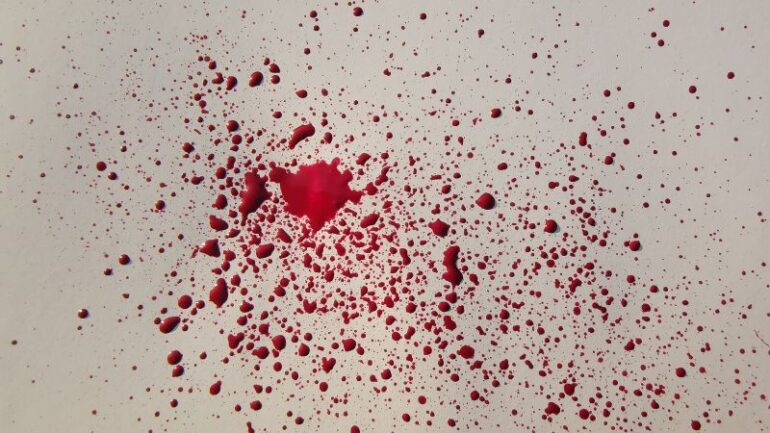True crime junkies will already know that blood splatter at a crime scene can speak a thousand words. While blood’s obvious benefit within the realm of forensic science is its wealth of DNA, it can also tell a story.
Bloodstain pattern analysis experts can use the shape, length and quantity of blood stains and splatter to re-enact crimes.
Dr Sophie Calabretto is joined by Cosmos Magazine journalist Ellen Phiddian who just so happens to be an amateur blood stain expert.
According to Ellen, proper bloodstain pattern analysis can help forensic scientists to ascertain “…what events at a crime scene might have caused blood to spread across the area is the way that they have spread”.
Using a combination of chemistry and physics, blood can tell us whether a weapon was used and even, how many people were at the scene of the crime.
Adrian, chair in forensic DNA at Flinders University tells Ellen and Dr Sophie Calabretto that the size of a blood droplet can tell experts what was used to draw the blood such as a knife, fist or bullet.
“if you provide action – hitting, kicking striking, into that blood, there is energy applied to that 50 microlitres to make smaller droplets,” he said “ there’s a marvellous physical relationship between the size of the blood spot and the force applied – the greater the force, the smaller the blood spots.”
Ellen, Dr Sophie and Adrain break down the science behind blood analysis, explaining how the size, shape and amount of blood can help experts to re-enact a crime scne and eventually find the person responsible for the bloodshed.
Tune into the full episode of The Science Briefing below…
Introducing The Science Briefing: a podcast about the science of everything and your new go-to podcast for your snapshot of science news. Hosted by Dr Sophie Calabretto and featuring journalists from Cosmos Magazine.
